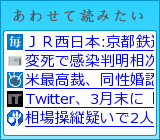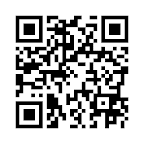これも以前のblogからの再掲(編集し直しています)
最近良く学び方等で引用される、
- 聞いたことは、 10%
- 見たことは、 15%
- 聞いて見たときは、 20%
- 話し合ったときは、 40%
- 体験したときは、 80%
- 教えたときは、 90%
記憶に残る学び方とは - *ListFreak
の数字。
Dale's cone of learning(もしくはDale's Cone of Experience)とよばれ、原典は
Dale, E. (1946, 1954, 1969). Audio-visual methods in teaching. New York: Dryden.
図はこのようにかかれることが多いです。
だが、
実はあの数字はでっち上げだという話.どこまで本当なのか.
People remember 10%, 20%...Oh Really? Monday, 01 May 2006 Will at Work Learning
上記サイトでDaleの1969年の第3版の中に出されている図を見ることが出来ます(数字は付記されていません)
私自身、講演等で、多用していた図でしたが、数字に根拠がないことを知ってからは使わなくなりました。
やはり引用する時は、原点に立ち返って自分で確認する必要性は今後も変らないのでしょう。
この問題へのもう一つの原因は少なくとも日本語の医学系論文での引用のルールにあります。
既に出版されている図やグラフをそのまま引用する場合は著作権者の承諾が必要なのですが、(断られることは少ないのですが)、多少改編する場合は出典の明記と「文献xxから著者により改編」と明記すれば著作権者に承諾が必要ないのです。当然incentiveとして改編した方が面倒な手間がないので、そうするわけですが、その際に引用者の恣意が入り込むわけです。
引用する場合はきちんと引用の原典を(読者が必要だと感じたら原典を参照できるように)
改編した場合はその旨を
最低限明記することが必要でしょう。
以下
http://www.internettourbus.com/arch/Dales_Cone_Drum_Corps-A072706.html
より
Dale's Cone of Nonesense
Audience: Educators, Librarians, and Trainers
Since many Tourbus riders are also educators or librarians, I thought I'd don my powder blue academic hood and share with you some interesting academic research. There is a concept in education called "Dale's Cone of Experience" that states that people generally remember:
10% of what they read
20% of what they hear
30% of what they see
50% of what they hear and see
70% of what they say or write
90% of what they as they do a thing
Often displayed graphically as a cone -- see http://teacherworld.com/dalescone.gif -- Dale's Cone has had a profound impact on the way we teach both children and adults.
And it is a complete and total fraud.
No, really. Will Thalheimer at Work-Learning Research delved into Dale's Cone and discovered that:
1. While Edgar Dale indeed did create a model of the
concreteness of various audio-visual material back in 1946, the model contained no numbers and no research was conducted to create the model. Dale's Cone was just a hunch, albeit an educated hunch, one that Dale warned shouldn't be taken too literally.
2. The percentages -- 'people generally remember 10% of what they
read' and so on -- were most likely added to Dale's Cone by an employee of the Mobil Oil company in the late 1960s. These percentages have since been discredited.
You can see Thalheimer's complete report online at
http://www.work-learning.com/chigraph.htm
It's an eye-opening read, especially if you're an educator, librarian or trainer. Let me also put in a plug for Thalheimer's blog at
http://www.willatworklearning.com/
While I've known about Thalheimer's investigation into Dale's Cone for a couple of years now, I've only recently discovered his blog. It contains a collection of "research-based commentary on learning, performance, and the industry thereof."









0 コメント:
コメントを投稿